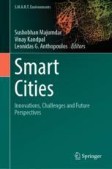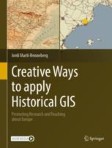Search
Search Results
-
Monitoring groundwater quality using principal component analysis
For areas without perennial surface water sources, groundwater might be considered the second-largest source of drinking water after surface water....

-
Delineation of Irrigation Management Zones Using Geographical Weighted Principal Component Analysis and Possibilistic Fuzzy C-Means Clustering Approach
Delineation of irrigation management zonesIrrigation management zone (IMZsIrrigation management zone) depend on spatial variability of soil...
-
Principal component based fusion of land surface temperature (LST) and panchromatic (PAN) images
The spatial details of panchromatic (PAN) images are always higher than land surface temperature (LST) images. The main aim of this paper is to...

-
Deformation Monitoring and Primary Driving Factor Analysis in the Coastal Area of Liaohe Oilfield Utilizing MT-InSAR and PCA
Water injection and oil production often lead to significant surface deformations in oilfields. Such geological hazards are substantial potential...

-
Analysis of morphological characteristics of gravels based on digital image processing technology and self-organizing map
A comprehensive understanding of spatial distribution and clustering patterns of gravels is of great significance for ecological restoration and...
-
Assessment of the Influence of Spatial Scale and Type of Land Cover on Urban Landscape Pattern Analysis Using Landscape Metrics
Landscape metrics are widely used to measure the spatial pattern of landscapes. However, there are important gaps in their application. For instance,...

-
Open Vector Analysis
Vector data represent spatial objects and phenomena by modelling the geometry and the attribute. Vector data enable us to describe spatial...
-
Comparative Analysis of Multispectral and Hyperspectral Imagery for Map** Sugarcane Varieties
Map** different varieties of sugarcane is vital for estimating yields and assessing crop damage risks. Different biophysical and chemical...

-
Map** the Landscape of Smart City Research: A Bibliometric Analysis
This bibliometric analysis examines smart city research literature published in English between 2019 and 2023. The aim was to map the scholarly...
-
Enhancing Flood Risk Analysis in Harris County: Integrating Flood Susceptibility and Social Vulnerability Map**
Due to climate change, the frequency and intensity of floods have dramatically increased worldwide. The innate social inequality has been exposed and...

-
Micro-Spatial Analysis of Rural Accessibility for Imbricating Regional Development: Exemplifying an Indian District
Good road connectivity followed by efficient transport options, which help them move and get access to themselves and the various services and...
-
Methodology for Ecological Analysis
Data, data collection, selection, and methodology play key roles in ecological analysis. Data collected by appropriate methodology, and with the...
-
Categorisation by Leveraging CNNs and Remote Sensing Satellite Imagery for Crop Analysis in Arid Environments
The classification of walnuts in the dry areas of Ganquan Township, Awati County, **njiang, is investigated in this research using traditional...

-
Contents and spatial distribution patterns of heavy metals in the hinterland of the Tengger Desert, China
The desert in northern China is one of important sources of loess and one significant source of material for sandstorms in Asia. The sand/dust that...
-
Assessment on Social Vulnerability to Adapt the Hindrances of Natural Hazards in Purba Medinipur District, West Bengal, India
Social vulnerability is the resistance power of a community that influences its ability to cope with the impact of natural hazards which depicts the...
-
The effect of architecture design as the non-digital component to the digital industry development—case study ‘Brick Factory’ in Prishtina, Kosovo
Buildings that were once the machinery of production, and influencing not only the economic but also the social relations of the inhabitants, and...

-
Geospatial Analysis of Tungiasis Disease Transmission Risk in East Africa
Tungiasis is a cutaneous parasitic disease caused by the flea Tunga penetrans. The disease has a broad geographic range throughout tropical and...
-
Morphometric characterization of sub-basins in a hard-rock aquifer system of Maharashtra, India, using geospatial and geostatistical tools
The presence of groundwater in the Deccan Traps of Maharashtra is governed by the heterogeneities in the basaltic flow morphology, weathered...

-
Analysis of Inequalities Between Territories
This chapter is organised into a series of sections that will explain many conceptual and practical aspects of territorial imbalances. After an...
-
Mineralogical Map** Using Remote Sensing and Geophysical Data in IMITER Anti-Atlas of Morocco
IMITER is an area in Morocco which is considered to be the most important zone for silver exploration. It is characterized by two units: an upper...

